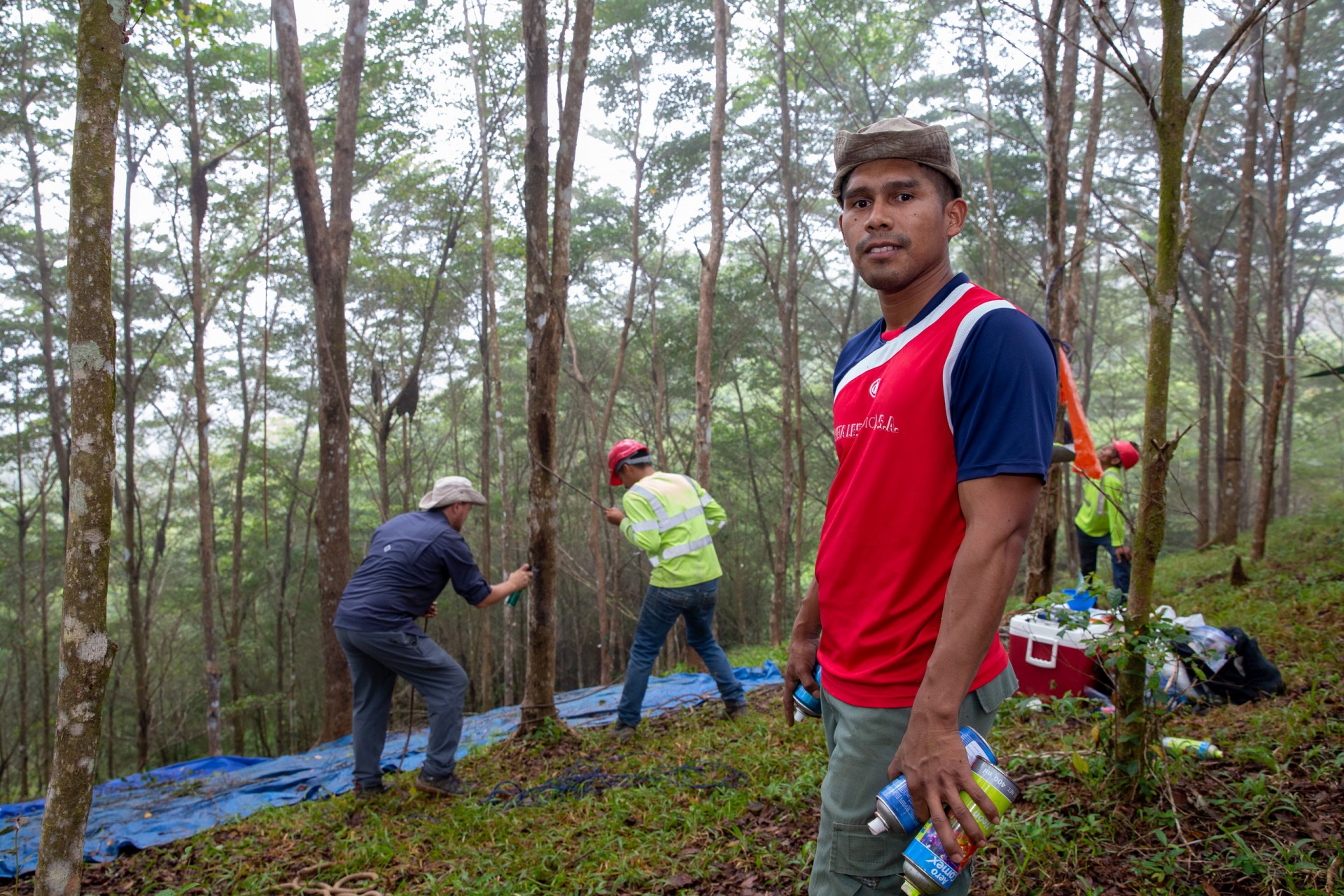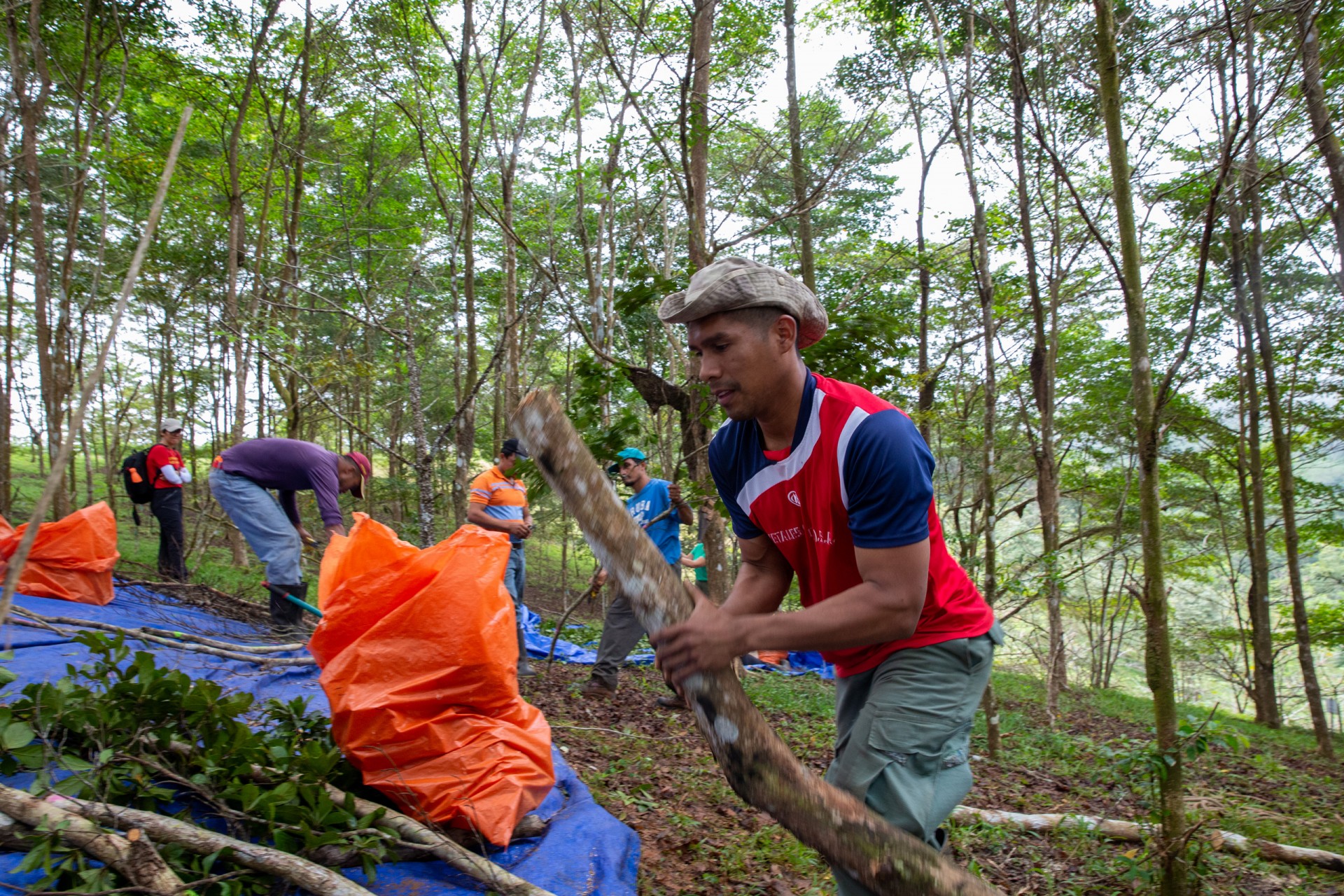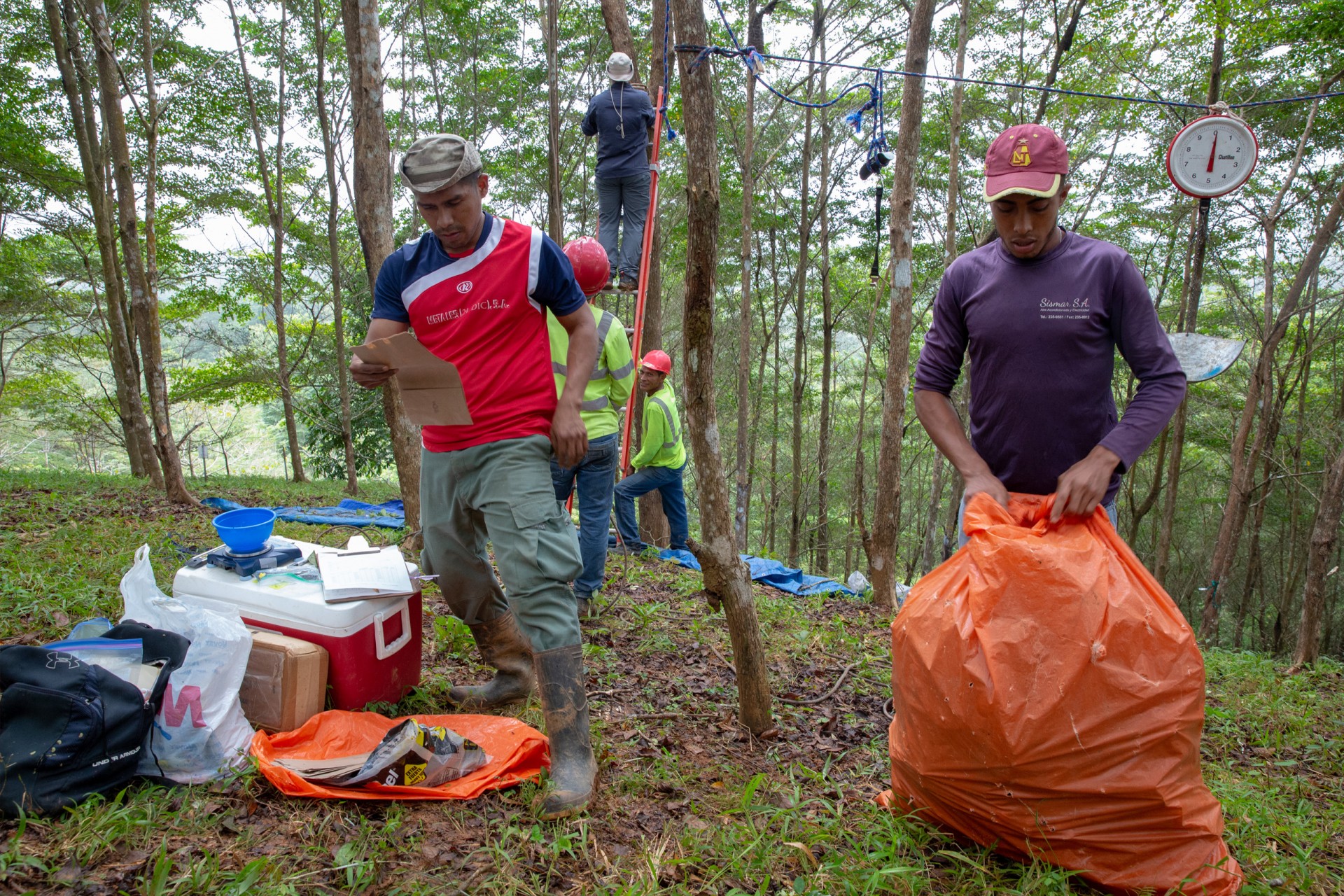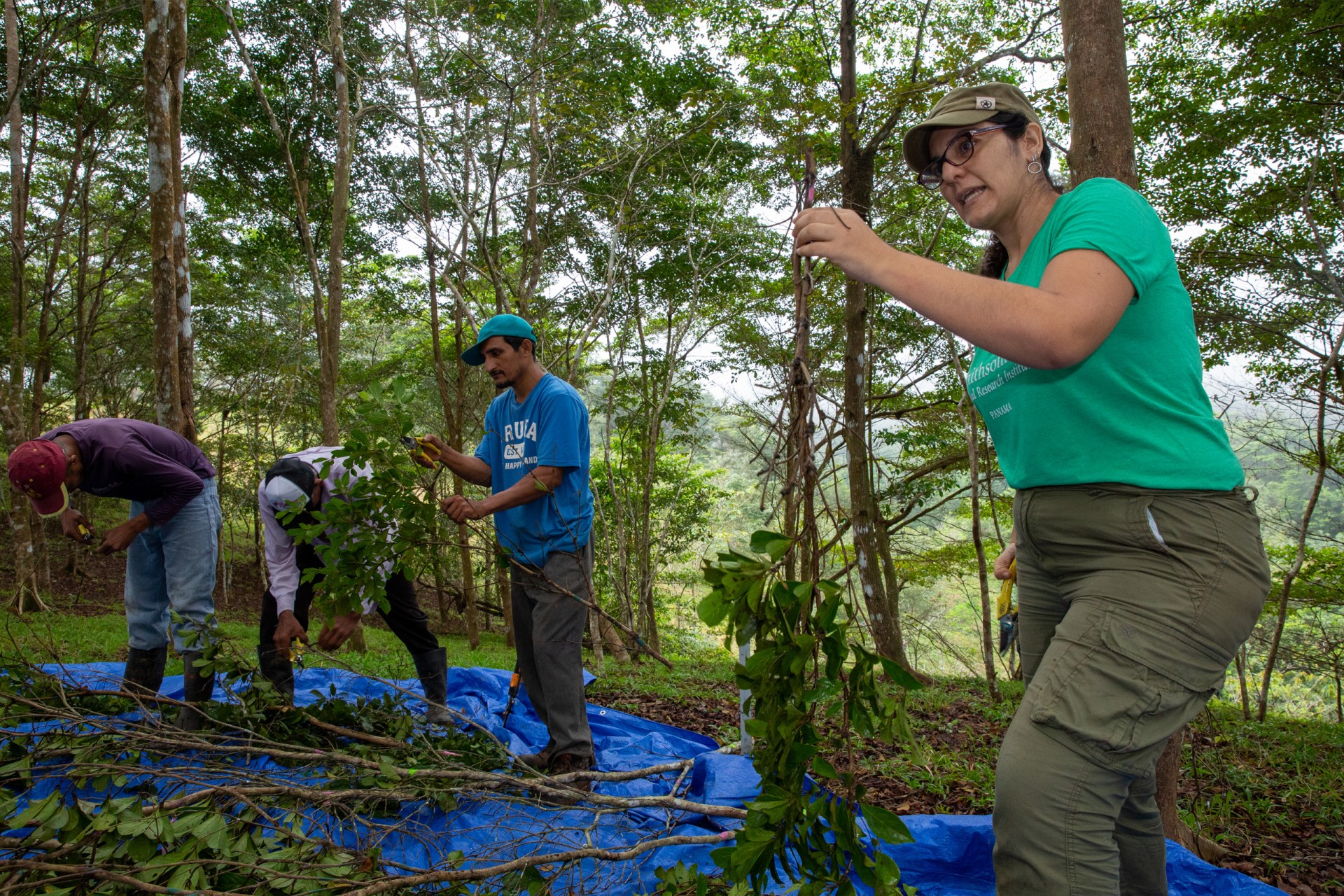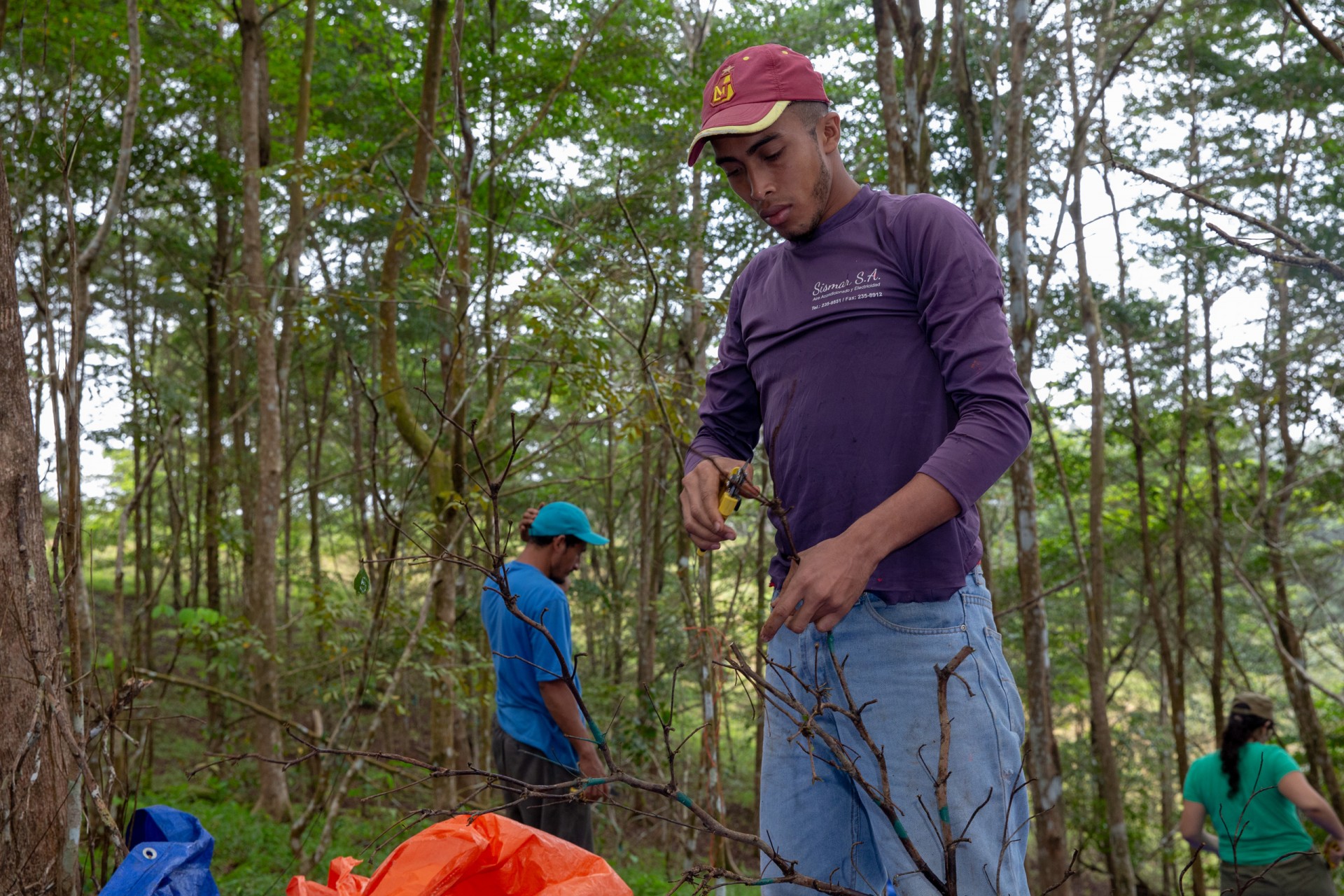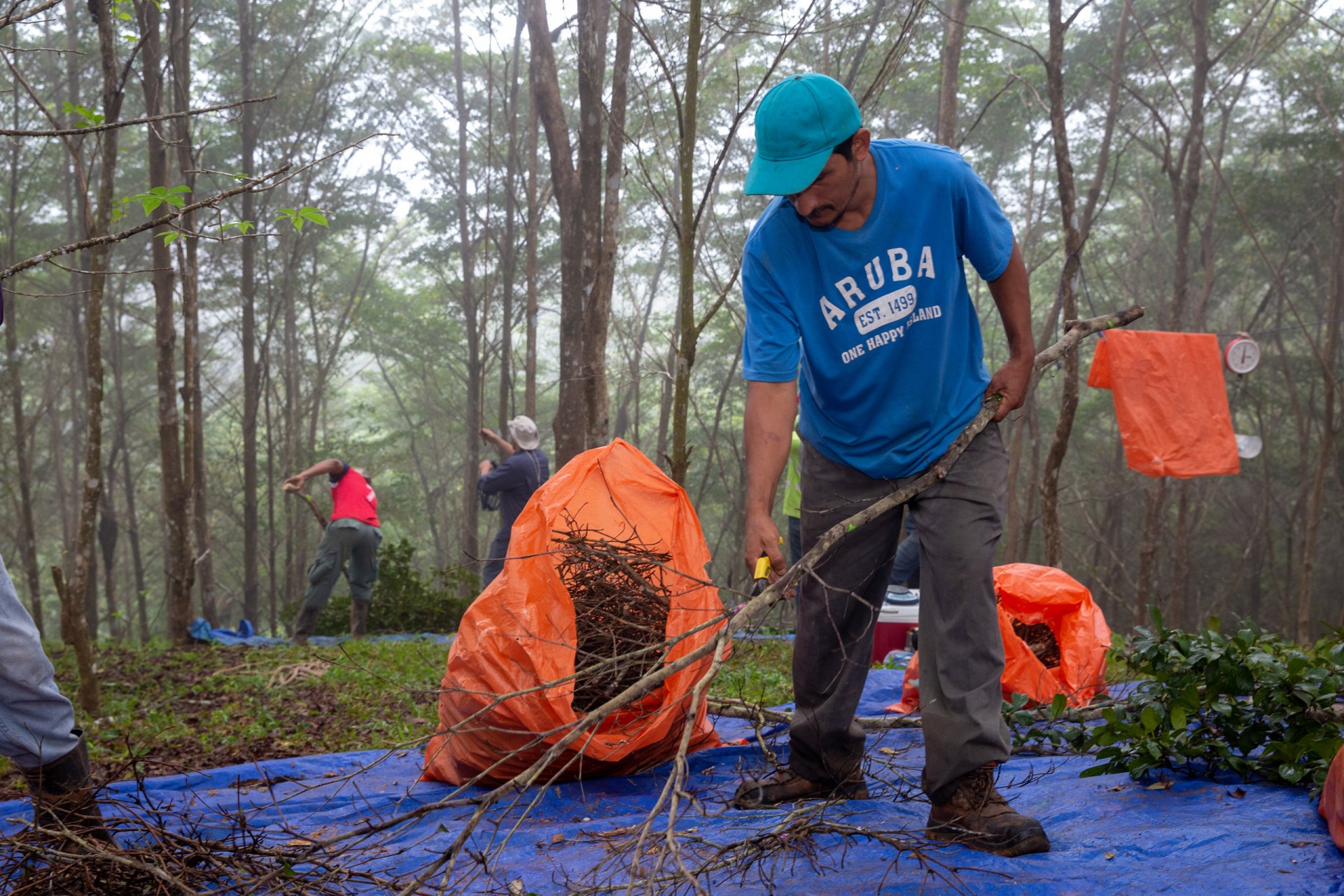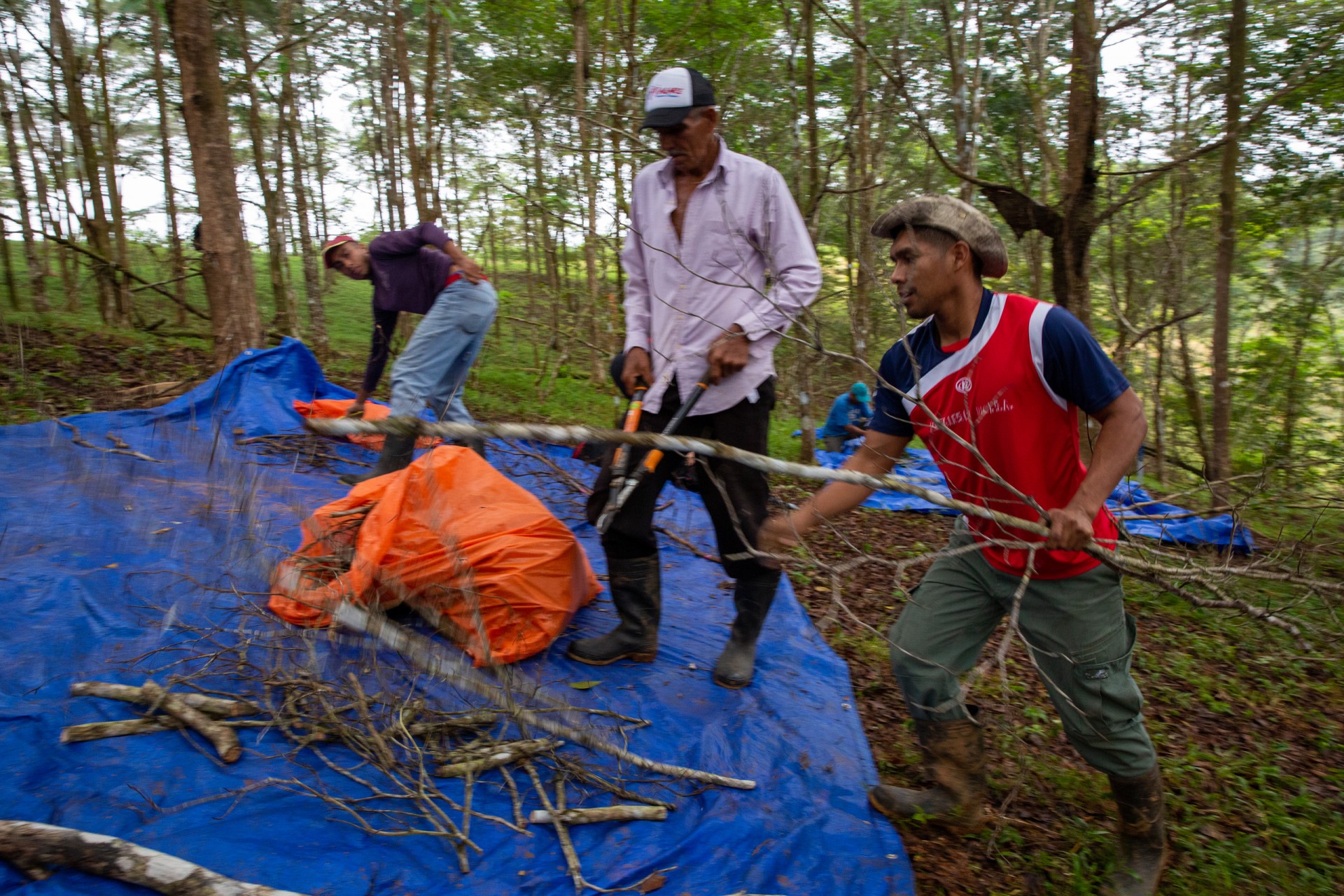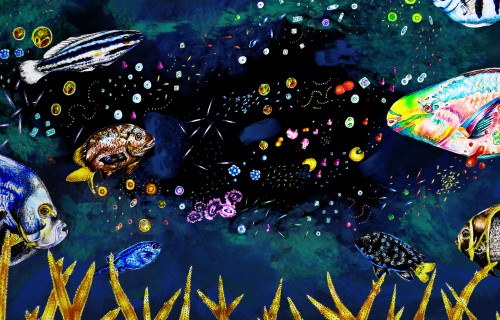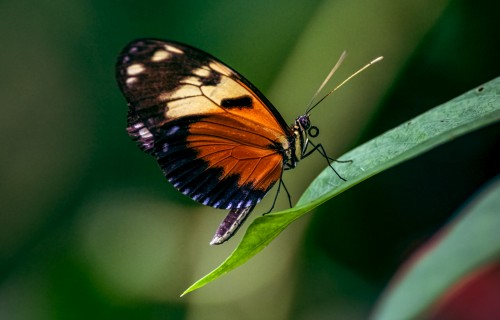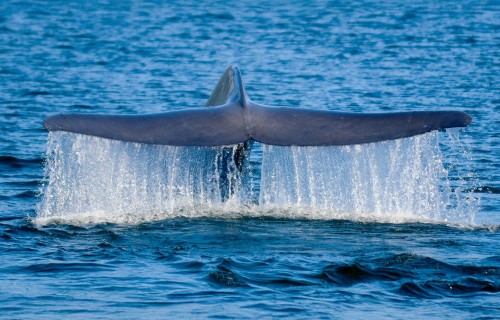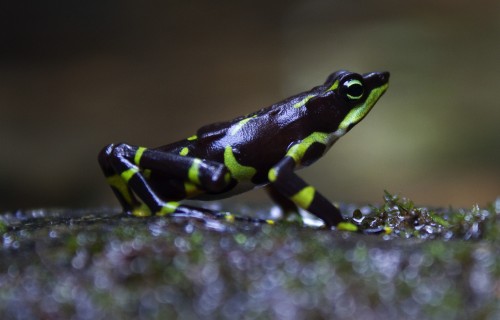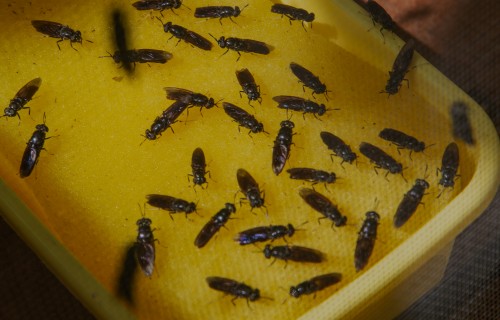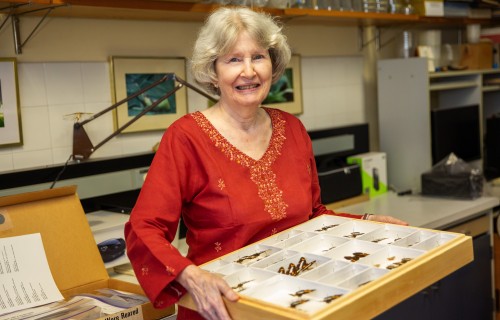Smithsonian science helps understand blue whale migratory and foraging patterns to inform conservation strategies
Locked up
Unraveling sustainable forest
management while in confinement
Colón
Edwin H. García started as a Bachelor student in Agua Salud 8 years ago. Now he leads a research project that will allow for estimating the value of native trees for reforestation and restoration
When he learned that the laboratories at the Smithsonian Tropical Research Institute (STRI) could close after the arrival of COVID-19 in Panama, Edwin García locked himself up in the lab for several days to weigh his samples of leaves, branches and stems from three native trees: Dalbergia retusa, Terminalia amazonia and Pachira quinata. If he was going to be quarantined, he could at least make sure he had all the data he needed to advance his master's thesis.
“I spent all day and part of the night in the laboratory, weighing and weighing. I managed to finish on a Sunday, half an hour before the 9:00 pm curfew started,” he recalls.
This is his first personal experiment in 8 years, since he joined STRI's Agua Salud project in 2012 as an intern. He studied Natural Resources in Penonomé, province of Coclé, because he liked nature, but he did not imagine being part of a scientific project. Nor did he know of the existence of STRI. He spent three months on the project and the following year he returned for his professional practice.
Agua Salud is a large-scale, long-term research project in the Panama Canal watershed that seeks to determine best practices for managing natural resources in a sustainable manner. Part of this is smart reforestation: understanding which species are best suited for the type of environment you are seeking to restore.
For Edwin the project would become a school. He would gain experience in the field, measuring the different trees and learning to identify species. After graduation he would lead other groups tasked with taking measurements on the experimental plantations, including students.
During those years he lived in El Giral, Colón, in houses rented by the Agua Salud project. On weekends he traveled to his home in Coclé. After several years establishing research plots, measuring trees, inventorying species, and training students, Edwin wanted to go one step further.
What were the scientists doing with all that data that he helped collect?
Now he is studying for a master's degree in biological sciences at the University of Panama, thanks to a scholarship from the National Secretariat for Science, Technology and Innovation (Senacyt), and he is finishing his thesis while quarantined. With his research he seeks to understand what the best conditions for growth of three native species are, both for their timber value and for their importance in reforestation and reforestation. Do they grow better in mixed or monoculture plantations? And if they grow best in mixed plantations, what are the best combinations?
"Accurate estimates of biomass or carbon in plantations are critical to understanding the global carbon balance and promoting initiatives to mitigate carbon dioxide emissions through forest management," explains Katherine Sinacore, postdoctoral fellow at STRI and Edwin's mentor. “A challenge in achieving this is that the equations used to estimate biomass have often not been developed for mixed species plantations. Most are for monocultures”.
To calculate this, he had to cut some trees from the different experimental plots and weigh each of their parts: leaves, branches (small, medium, large) and stem. In other words, the total weight of the trees. Part of this is what he was doing in the laboratory in recent days, before the total quarantine was implemented in the country. Thanks to this measure, he has been able to focus and hopes to complete his thesis before September.
“Edwin is incredibly hard-working, meticulous, and curious. When I met him, he was an intern at Agua Salud,” says Sinacore. "He learned the technical side of the fieldwork very quickly and, over the years, it has been fun watching him grow and design this biomass project for his master's thesis."
After the pandemic, he will start looking for doctoral opportunities abroad. At STRI he has been able to collaborate with scientists from other parts of the world and every day he feels more comfortable speaking English. In the future, he hopes to see himself working on ecological restoration projects that combine the socioeconomic and environmental spheres.
"I really like working on this type of research, because it allows us to understand how to use natural resources in a sustainable way to obtain both economic and environmental benefits," he admits.
And although he knows that it is not easy to be a scientist in Panama, because financial support is often difficult to obtain, he adds that there are often opportunities that are lost due to lack of promotion. So, whenever he meets younger students, he advises them on what he has already learned along the way.
"If you are at the right time, with the right people and in the right place and taking the right decisions, as happened to me, you can grow as a scientist," he concludes.


